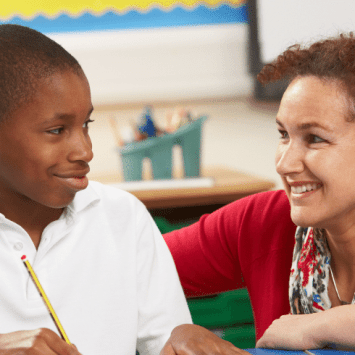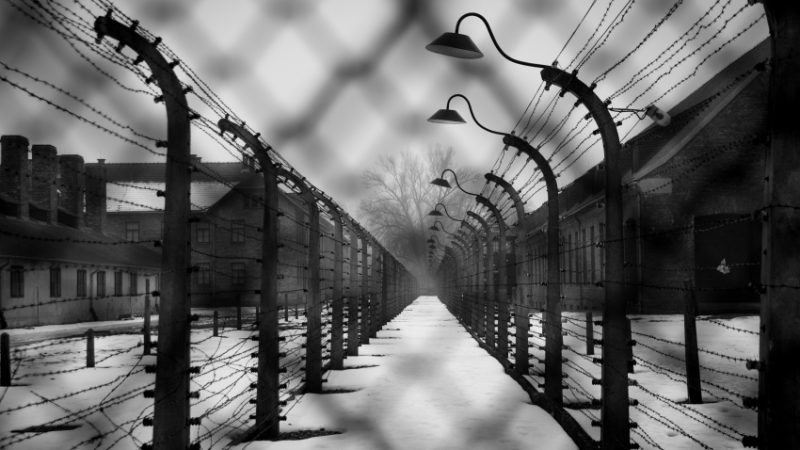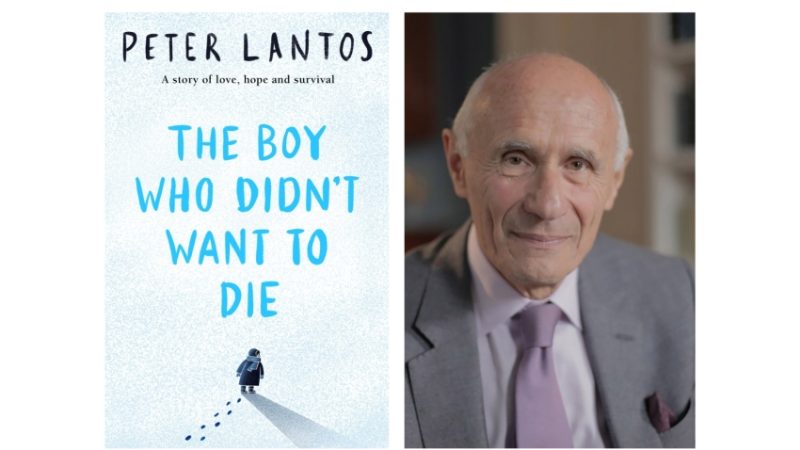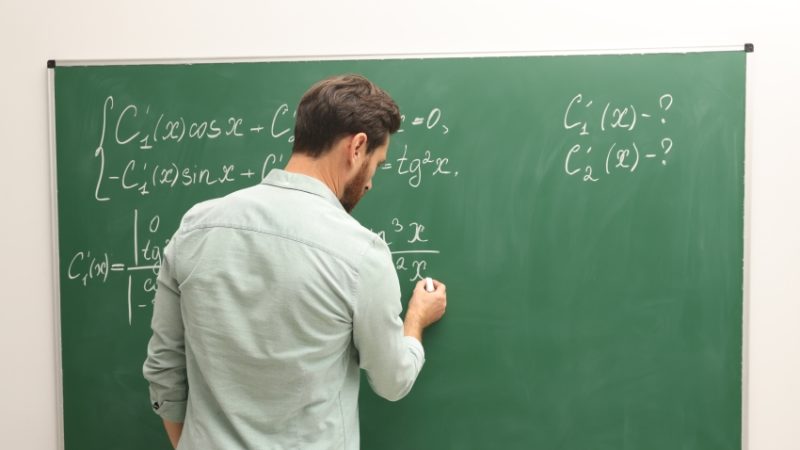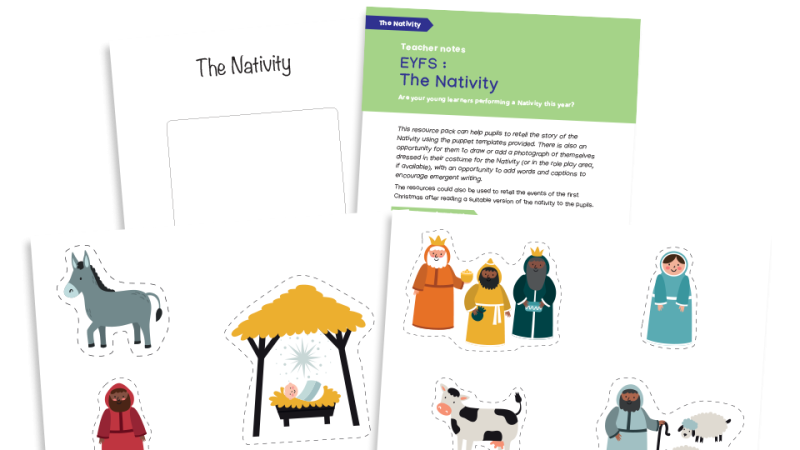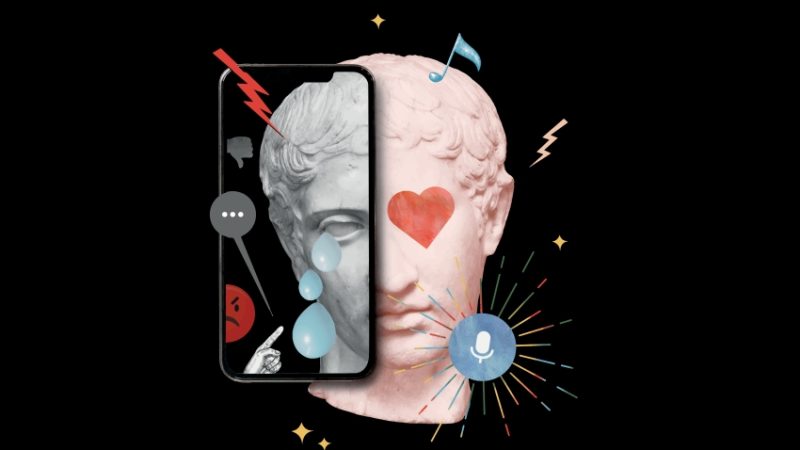Holocaust Memorial Day 2023 – Best teaching resources for primary and secondary
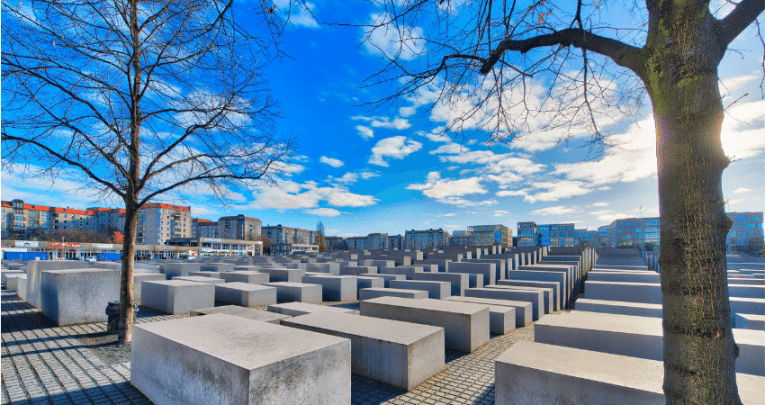
Holocaust Memorial Day takes place on 27th January – use these resources to get involved and educate your students…
- by Teachwire
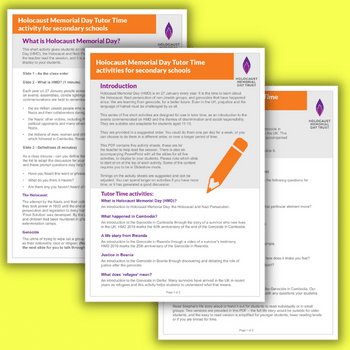
What is Holocaust Memorial Day?
Holocaust Memorial Day takes place to remember the six million Jews murdered during the Holocaust, alongside the millions of other people killed under Nazi Persecution.
It’s also used to remember genocides that followed in Cambodia, Rwanda, Bosnia and Darfur.
Beki Martin, executive director of charity Facing History and Ourselves, says that Holocaust Memorial Day “provides us with the critical opportunity to educate young people about this terrible history, as well as how they can stand up against acts of bigotry and hatred today.”
“This contemporary resonance has been highlighted by Lord Mann’s recent report on Anti-Jewish Hatred, which draws attention to the concerning rise in antisemitism, with antisemitic incidents trebling in schools over the last five years.”
Beki continues, “Holocaust education is vital. As Lord Mann suggests, it would benefit from being accompanied by better student understanding of the history of antisemitism. This includes what it looks like in the present day, and how we can recognise and challenge it.”
When is Holocaust Memorial Day?
Holocaust Memorial Day takes place each year on the 27th January, which is the anniversary of the liberation of Auschwitz-Birkenau, the largest Nazi death camp.
What is the theme for Holocaust Memorial Day 2023?
The theme for Holocaust Memorial Day 2023 is ‘Ordinary People’. It focuses on the idea that it’s ordinary people that facilitate genocide – and that those who are persecuted are ordinary people who belong to a particular group.
Read all about this year’s theme on the Holocaust Memorial Day Trust website.
Beki Martin from Facing History and Ourselves explains that you can use this year’s theme “to shine a light on the choices that individuals have – to participate, stand by, resist, remember. It reminds our young people that they have a voice and that they can make a difference.”
Tutor time activities for secondary schools
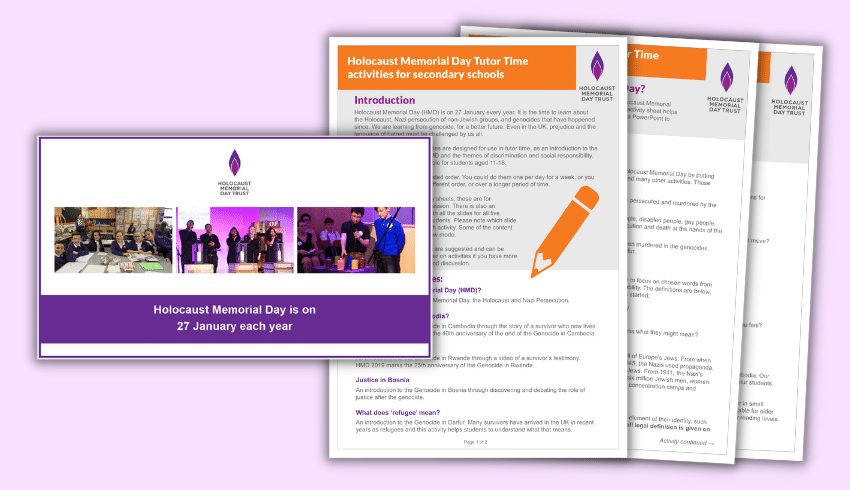
This set of five Holocaust Memorial Day activities is designed for use in tutor times. It includes short activities and discussion questions to introduce students to the genocides remembered on Holocaust Memorial Day.
Students will learn about people affected by the Holocaust and genocide and explore a range of themes, and are challenged to think about their own social responsibility, and what we can do to make a difference today.
Holocaust assemblies for primary and secondary
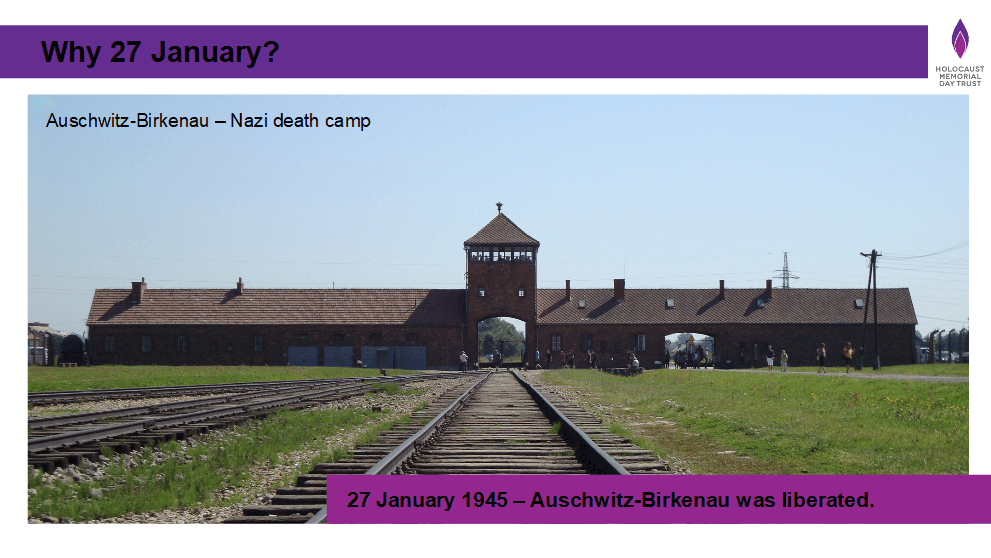
This KS2 Holocaust Memorial Day assembly introduces students to Holocaust Memorial Day, what we are commemorating, and how we can mark it. It includes poetry and film to engage students with the day.
The secondary Holocaust Memorial Day assembly teaches students about how people around the world have been affected by genocide, and what we can do today.
Each one features a script and presentation, designed to be used together by teachers to deliver the assembly.
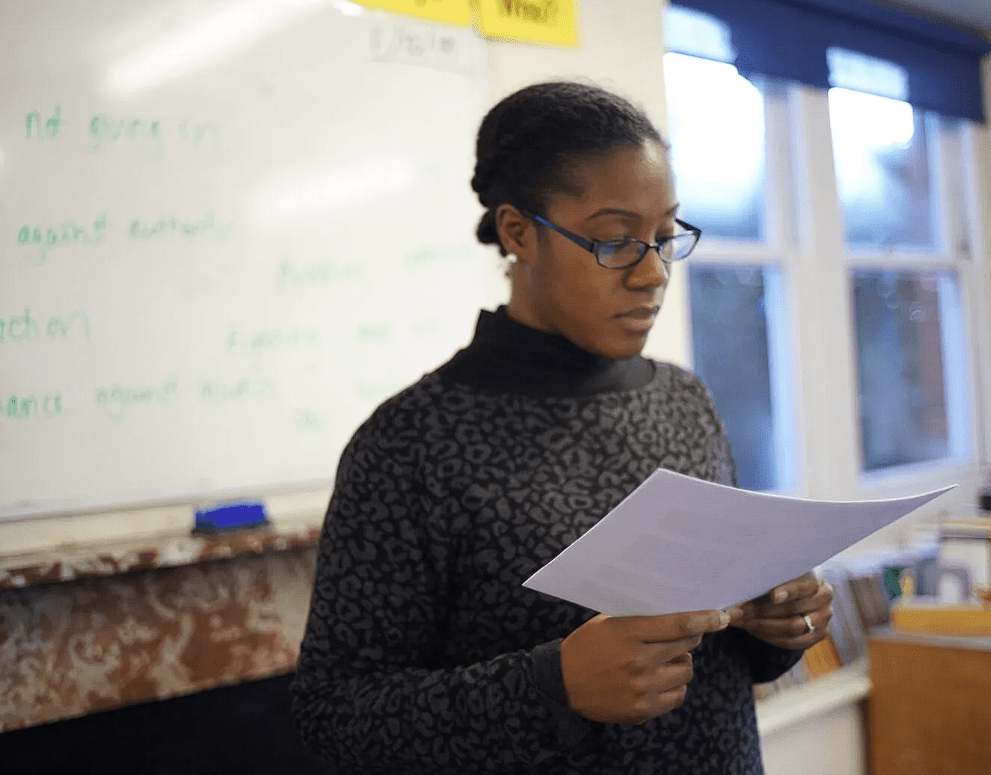
Alternatively, download these PowerPoint Assembly for KS3 and KS4 Students from Facing History and Ourselves.
Pupils will listen to testimonies from some of the ordinary people who came to the UK as part of the Kindertransport. They’ll also consider the importance of this testimony, and of memorialisation.
Discrimination lesson plan for secondary
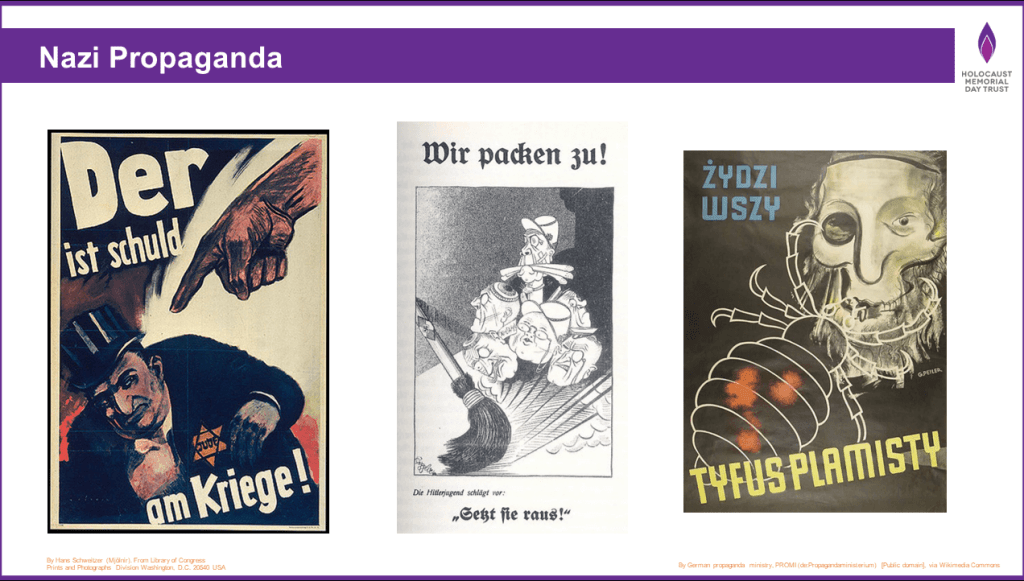
Made in partnership with Stand Up! Education Against Discrimination, this discrimination lesson plan will help your students learn how discrimination was used during the Holocaust, Nazi Persecution and the Genocide in Rwanda.
You will discuss antisemitism and anti-Muslim hatred in society today, and what to do if you are the victim or a witness to a hate crime.
On-demand webinar for teachers
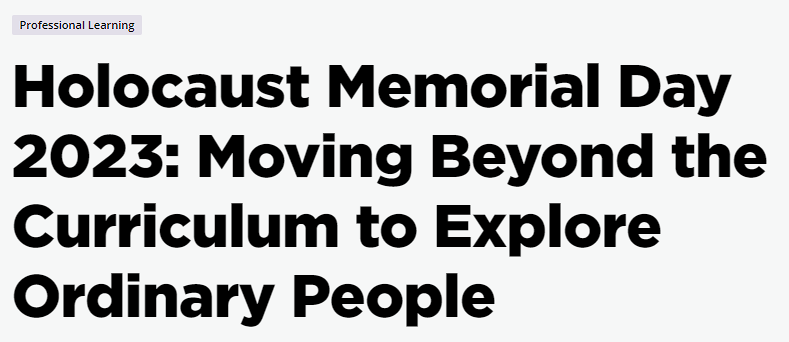
Take a look at Facing History and Ourselves’ one-hour on-demand webinar, which provides practical activities and support if you’re planning to hold assemblies, tutor time or PSHE sessions.
It’s perfect if you’re not necessarily a subject specialist and will leave you feeling fully equipped to have emotive and difficult conversations.
Take primary pupils to the National Holocaust Centre and Museum
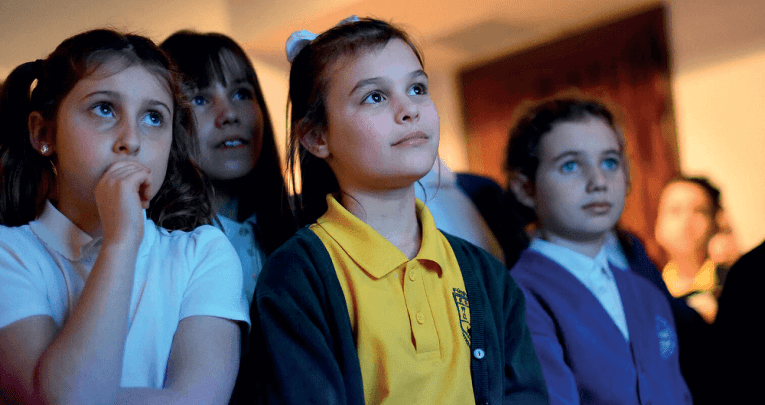
The Journey is an award-winning exhibition at the National Holocaust Centre and Museum in Laxton, Nottinghamshire, designed especially for primary schools.
Pupils will follow the story of a young Jewish boy from 1930s Nazi Germany to safety in England via the Kindertransport.
Teaching Holocaust and human behaviour
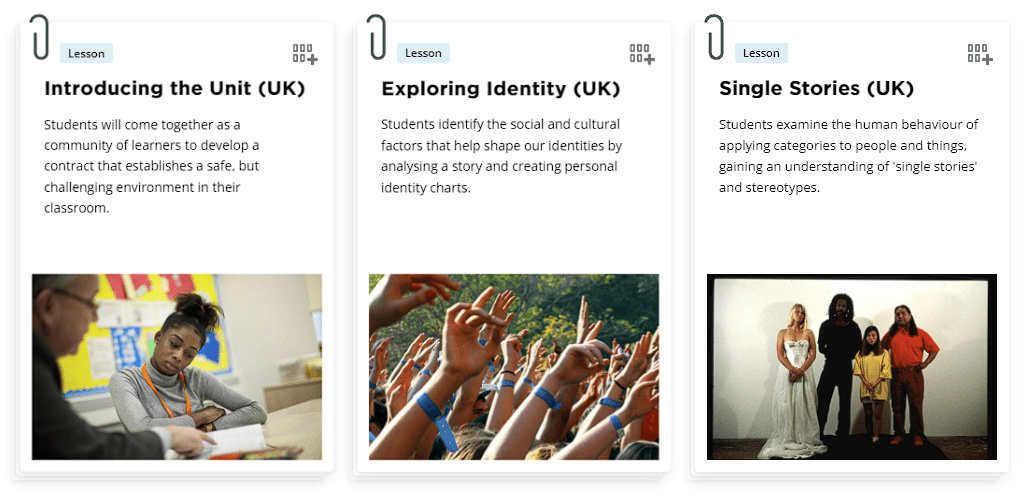
This 15-lesson unit from Facing History and Ourselves is designed for history, RS, English and PSHE teachers. It leads students through a detailed, challenging study of the Holocaust that asks what this history can teach us about the power and impact of choices.
Why children need to learn about the Holocaust
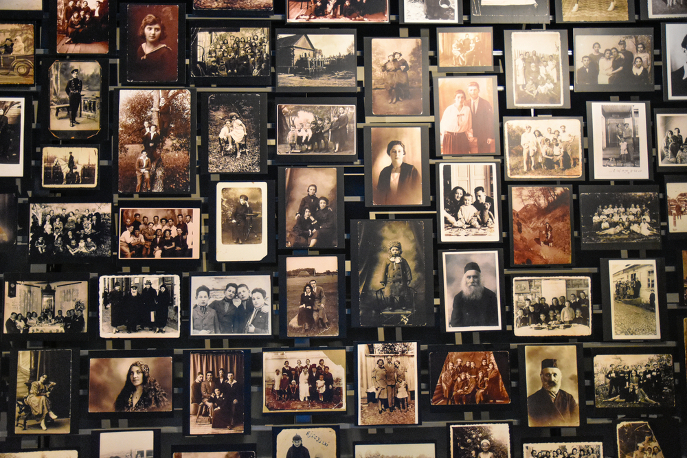
Obviously the Holocaust is a tricky topic to bring up with younger children, but in these turbulent times it’s essential that we do.
In Bev Forrest’s article about teaching the Holocaust, she outlines how you can give KS1 and 2 children a firm foundation of knowledge on this difficult subject, to set them up for a deeper understanding in secondary school.
Discussing contemporary antisemitism
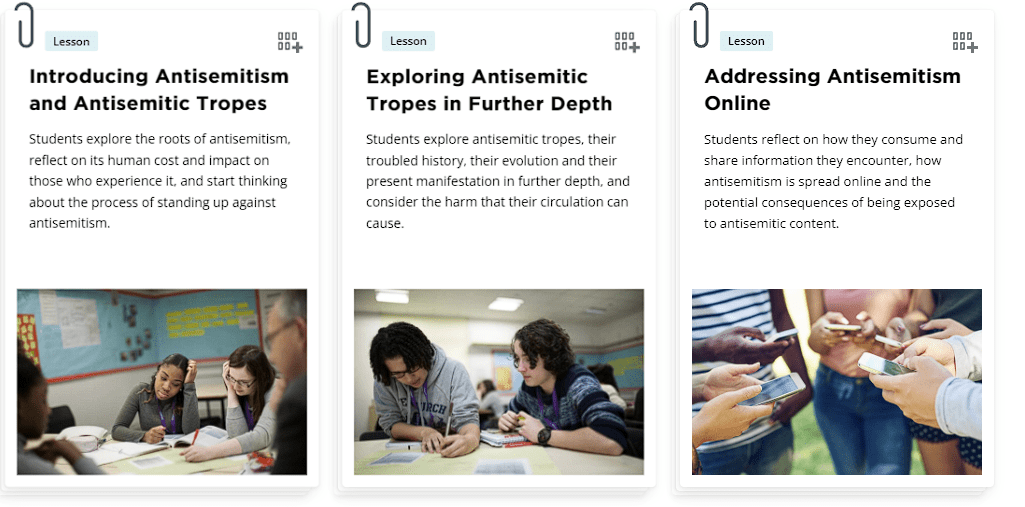
Discussing Contemporary Antisemitism in the Classroom is a four-lesson unit designed for RS, PSHE, history and English lessons.
It’s created by Facing History and Ourselves and asks students to reflect on antisemitism, how it manifests today and what we can do to challenge it.
What was the Holocaust?
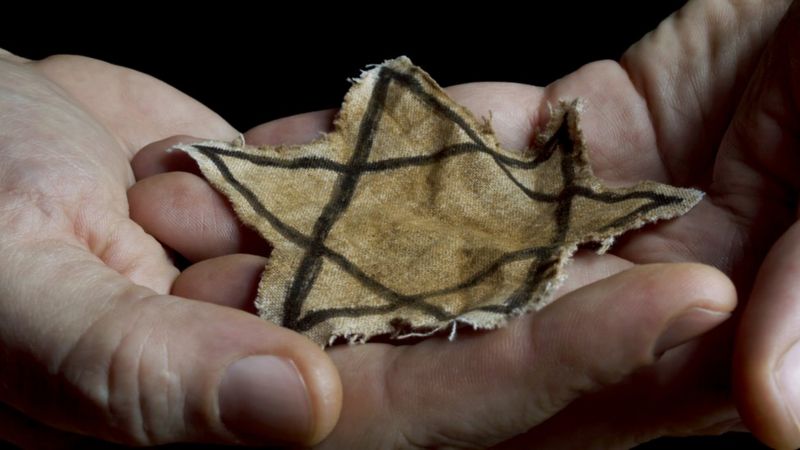
You need a sensitive approach if you’re going to teach the Holocaust to young pupils. If you’re after a good, child-friendly starting point for what the Holocaust was and what happened, try this CBBC page.
It has short descriptions of events and people, along with animated videos and links to other relevant sources.
Holocaust Memorial Day Trust resources
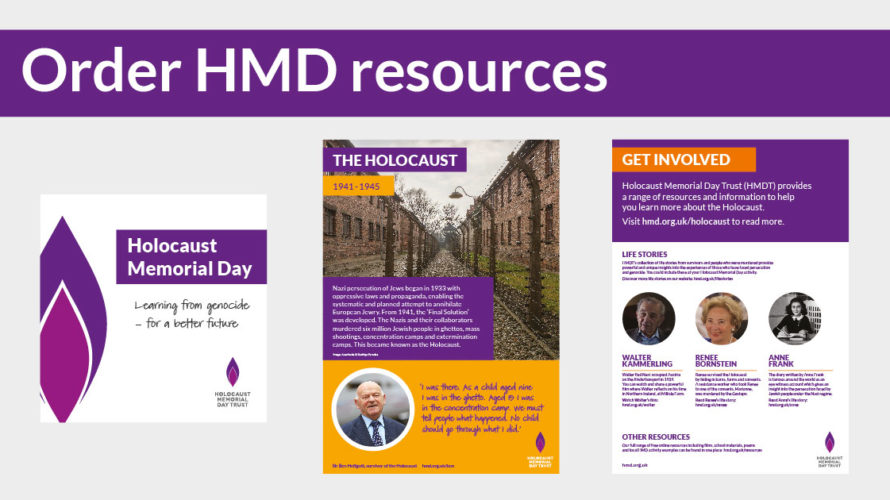
On the Holocaust Memorial Trust website you can order free About HMD booklets, stickers and pin badges to use in your own Holocaust Memorial Day activity.
Or, if you prefer, you can print the booklets and posters off yourself.
Holocaust Memorial commemoration video
If you’re looking for something to share with students, this award-winning video from the UCU comes in at around 25 minutes, and features personal testimonials of the Holocaust.
The film was accompanied by a short publication of testimonials by UCU members. It also includes others who survived genocides in Armenia, Bosnia, Cambodia, Darfur and Rwanda.
Find more Holocaust Memorial Day videos and resources from UCU here.
Exploring the Holocaust KS3 scheme of work
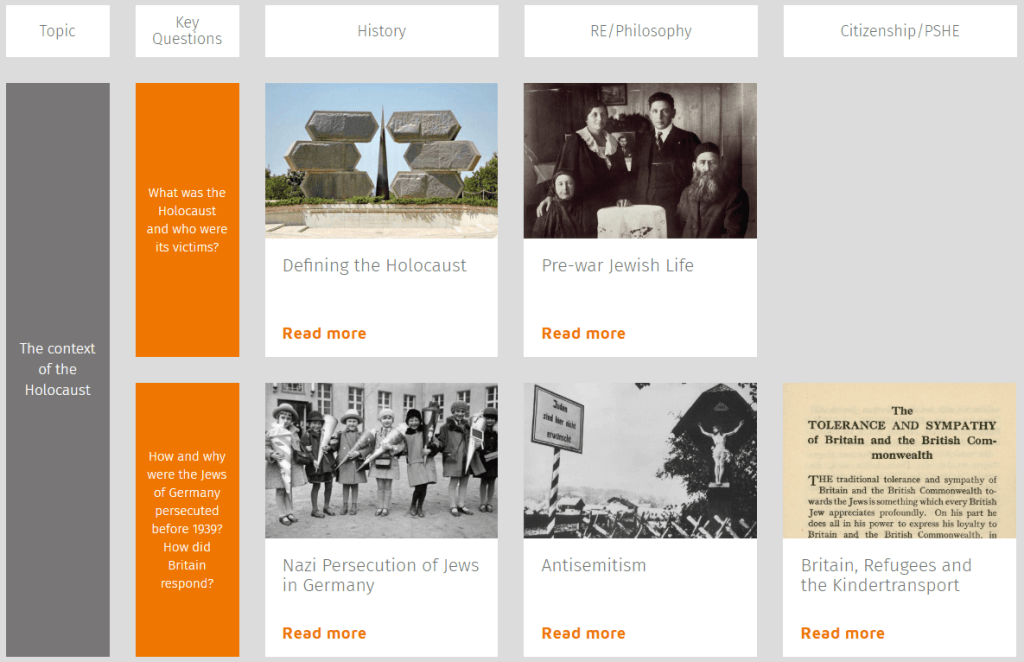
The Holocaust Education Trust produced ‘Exploring the Holocaust’, a free, comprehensive and flexible cross-curricular scheme of work.
It’s built around 15 core lessons in history, RE and citizenship or PSHE. You will also find additional resources which you can add to the scheme of work.
There’s also guidance on incorporating art into a programme of study on the Holocaust.
Fritz and Kurt
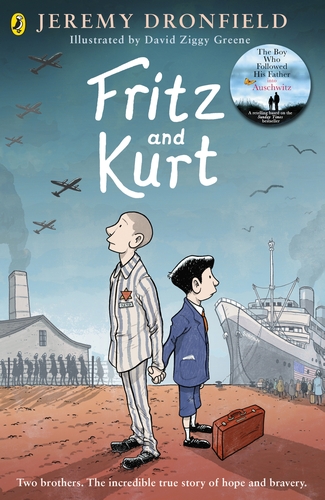
Fritz and Kurt is a book for children aged 9+, adapted from the bestseller The Boy Who Followed His Father into Auschwitz by Jeremy Dronfield.
It features the powerful real-life account of two brothers’ experience during the Holocaust. It’s an excellent way to introduce the topic in the classroom.
Download a free guide containing everything you need to help young readers get the most out of the book. It includes information and links to lesson plans and other teaching resources.
Holocaust timeline wall chart
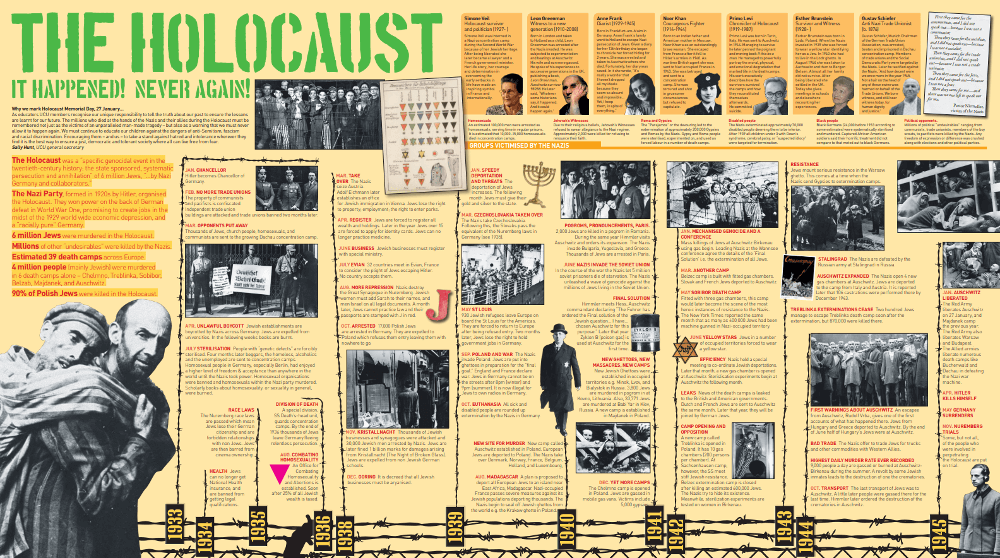
Take a look at this UCU Holocaust Memorial Day wallchart, updated to include new sections about the fight against fascist organisations like the BNP and EDL.
Use it in your school to educate against the dangers of anti-Semitism, fascism and racial discrimination.
The ten stages of genocide
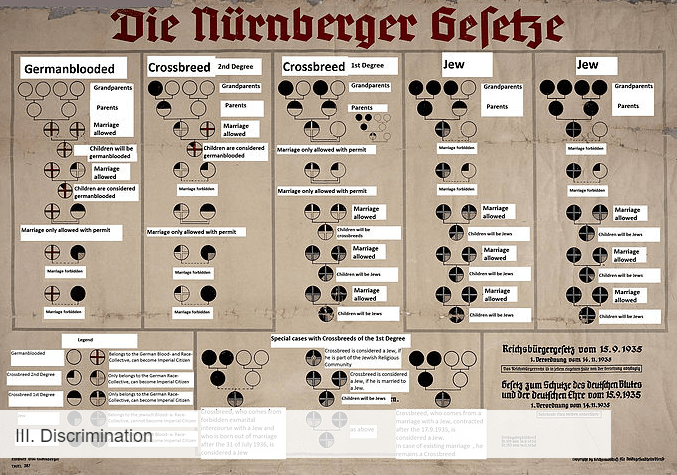
The importance of learning about the timeline of the Holocaust is essential for spotting acts of evil as they occur. Genocide doesn’t happen overnight. It starts with small steps imposing on people’s liberties.
In 1996, Dr Gregory H Stanton, President of Genocide Watch, outlined the ten stages of genocide as:
- Classification
- Symbolisation
- Discrimination
- Dehumanisation
- Organisation
- Polarisation
- Preparation
- Persecution
- Extermination
- Denial
On the Genocide Watch website you can see exactly how he defines each of these stages. It’s important though to not view this as a linear model. Some stages take place at the same time.
Belsen concentration camp
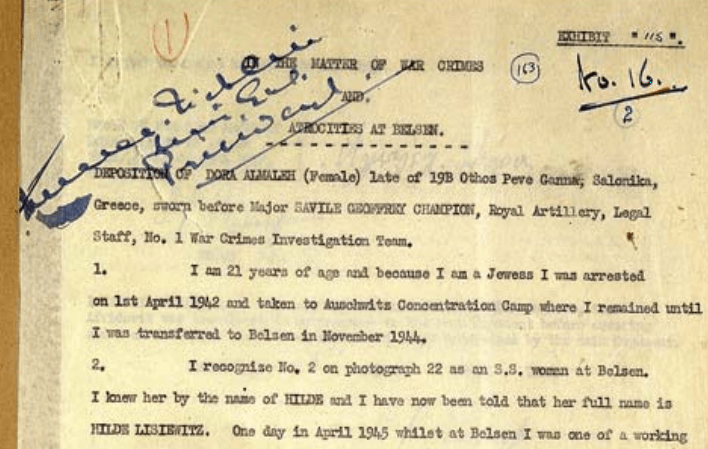
What did the British find when they entered Belsen concentration camp? The Nazis set up Bergen-Belsen in 1943. They didn’t use it as a death-camp, but it was still a place of unbelievable horrors and brutality.
Towards the end of the war, thousands of Jews had been evacuated from camps in eastern Europe. They were marched west to avoid the advancing Soviet army. There were 40,000 prisoners at Belsen in April 1945, many dying each day. Thousands more had recently died and had not been buried.
The outside world knew of the camps even before the war. Despite this, it took little notice of reports of what they were like. Allied soldiers were deeply shocked by the conditions when they advanced into Germany at the end of the war. These documents from the National Archives record what the British soldiers found, and how they responded.
Anne Frank resources
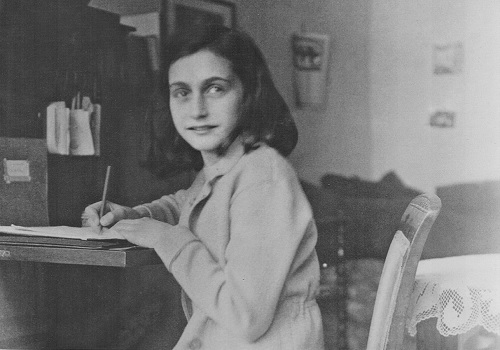
The Diary of a Young Girl by Anne Frank has long been the go-to text for educating young people about what life was like for those living in hiding from the Nazi regime.
Anne Frank Trust UK and Amnesty International produced a set of resources to go with this famous account, called Writing in Impossible Circumstances. It features teacher notes, lesson plans, a Powerpoint, resource sheets and curriculum links.
If you want to take things further, this webpage from Imperial War Museums, called ‘The Way We Lived: Exploring Jewish Life and Culture’, has a number of helpful videos.



